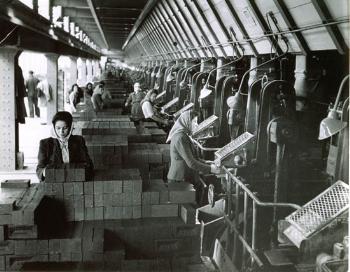Stewartby Introduction

Stewartby pavilion
Location and Name
The modern civil parish of Stewartby occupies the geographic area of Wootton Pillinge and Kempston Hardwick. It was created in 1937 from these parts of the civil parishes of Wootton and Kempston Rural respectively. The name remembers the former chairman of London Brick Company Limited, Sir Malcolm Stewart, who had died in the previous year.
Former Manors
Wootton Pillinge consisted of two old Manors named Pilling Rowberry and Pilling Shingay. The former was first mentioned in 1248 in the possession of one Geoffrey le Rous while the latter was held by the Knights Hospitallers.
Both manors were acquired by Sir Francis Clerke, who in 1627 bestowed the title upon Sidney-SussexCollege, Cambridge. After 1740, the estate was inherited by Sarah, the widow of Henry Earl of Suffolk, and by her will, was obtained by Francis Mottey Austen who sold the estate in 1812 to William Parsons. That part of the modern parish taken from Kempston Rural consisted of the Manor of Kempston Hardwick.
Wootton Pillinge
By the time of Parliamentary Inclosure Wootton Pillinge was a tiny hamlet of just a few farms and a dozen cottages in the larger Parish of Wootton. The economy was predominantly rural with most residents living off the land they held freehold or copyhold from the Lord of the Manor. The economic importance of the village was increased in 1846 when the first railway line in Bedfordshire dissected the village.

Women working on the brick production line during the Second World War [ref: Z41/LB8/3/5]
Bricks
By the end of the nineteenth century the flat plains of Wootton Pillinge were identified as one of the largest exposures of Oxford Clay in the country, a material ripe for producing the revolutionary Fletton Brick. This geological convenience made Wootton Pillinge a potentially rich resource and it wasn’t long until brickmaking was to become the core economic activity in the village. Although there are earlier examples of brickmaking in the area (See 1st edition Ordnance Survey Map) the revolution was kick started In 1897 when B.J.Forder & Son decided to open two Fletton brickworks In Bedfordshire, one at Elstow, the other at Wootton Pillinge.
The Stewart family who took over the management of the Wootton Pillinge brickworks in 1899 were shrewd businessmen who connected the welfare of their employees to the economic success of their business. Under their management the development of the brickworks and the dream of Stewartby as a model village for their employees started to take shape.
Although there had been two blocks of four cottages built as early as 1910 for the workers, the main development of the village began in 1926 when the Stewart family started to build housing for their ever increasing number of employees. With this came local amenities, improved canteens, a magnificent swimming bath and a village social centre, namely Stewartby Memorial Hall. It soon developed as a truly model village and in 1935 the decision was made to rename the hamlet Stewartby in honour of it’s creators, and the new parish was created using some land from the parish of Wootton and some from the parish of Kempston Rural. The community was greater defined by the opening of a middle school in 1936, a senior school in 1937 and a [Church [?]. At the same time the Brickworks industry in the area went from strength to strength, indeed, at one point Stewartby Brickworks could boast to be the biggest in the world.
In the latter quarter of the 20th century the demand for bricks was in decline. A number of the larger brickworks, such as that at Brogborough were closed and disappeared from the landscape. What was left behind were the holes in the ground where the clay had been extracted. Some of these have now either been filled with water and are used for water sports or wildlife whilst others are used to bury rubbish from London. In the early 1980s it was proposed that low level nuclear waste might be dumped in one or more of the pits but after an extensive campaign of protest, led by Bedfordshire County Council, the idea was dropped.

Stewartby chapel, September 2007
Religion
Stewartby is unusual in being a civil parish without any corresponding Anglican ecclesiastical parish. A chapel in the main part of the village serves all Christian denominations.
Population
The size of Stewartby was in decline for the first four decades after World War Two, but has recently begun to grow again as these figures, taken from censuses, demonstrate:
1951: 1,638
1961: 1,235
1971: 1,083
1981: 964
1991: 964
2001: 1,211